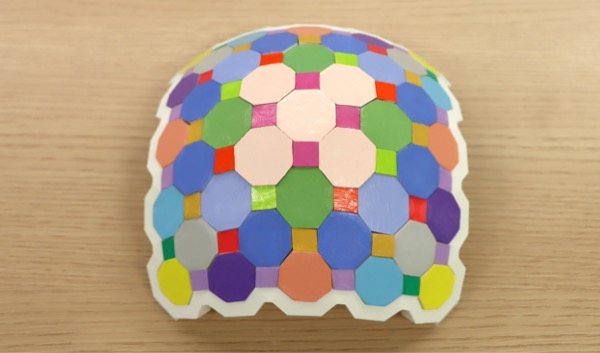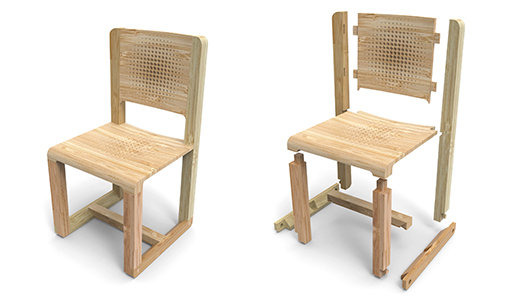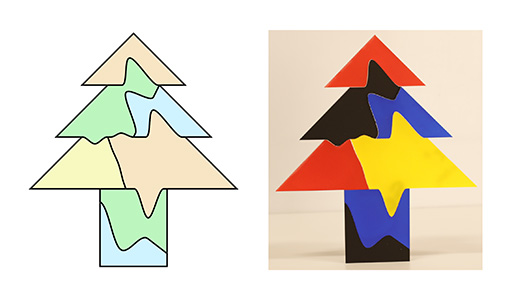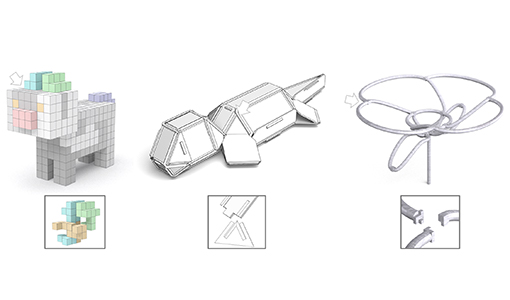An assembly refers to a collection of parts joined together to achieve a specific form and/or functionality. Assemblies enable to build large and complex objects by assembling a set of small and simple parts, facilitating their fabrication, storage, maintenance, and usage. Due to this reason, assemblies are ubiquitous in our daily life, existing in a wide variety of scales and geometric forms; typical examples include toys, electronic devices, furniture, and architecture.
While assemblies have intriguing properties, designing assemblies is a non-trivial task, even for professionals. Computational assemblies is an emerging research topic in computer graphics that studies computational techniques for analyzing, designing, and fabricating assemblies. Computational assemblies provide new ways for general users to easily design and make their personalized assemblies. In this topic, we develop computational methods to study various aspects of assemblies such as structural stability, assembly planning, fabricability, and reusability.



